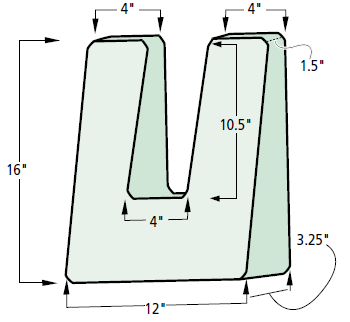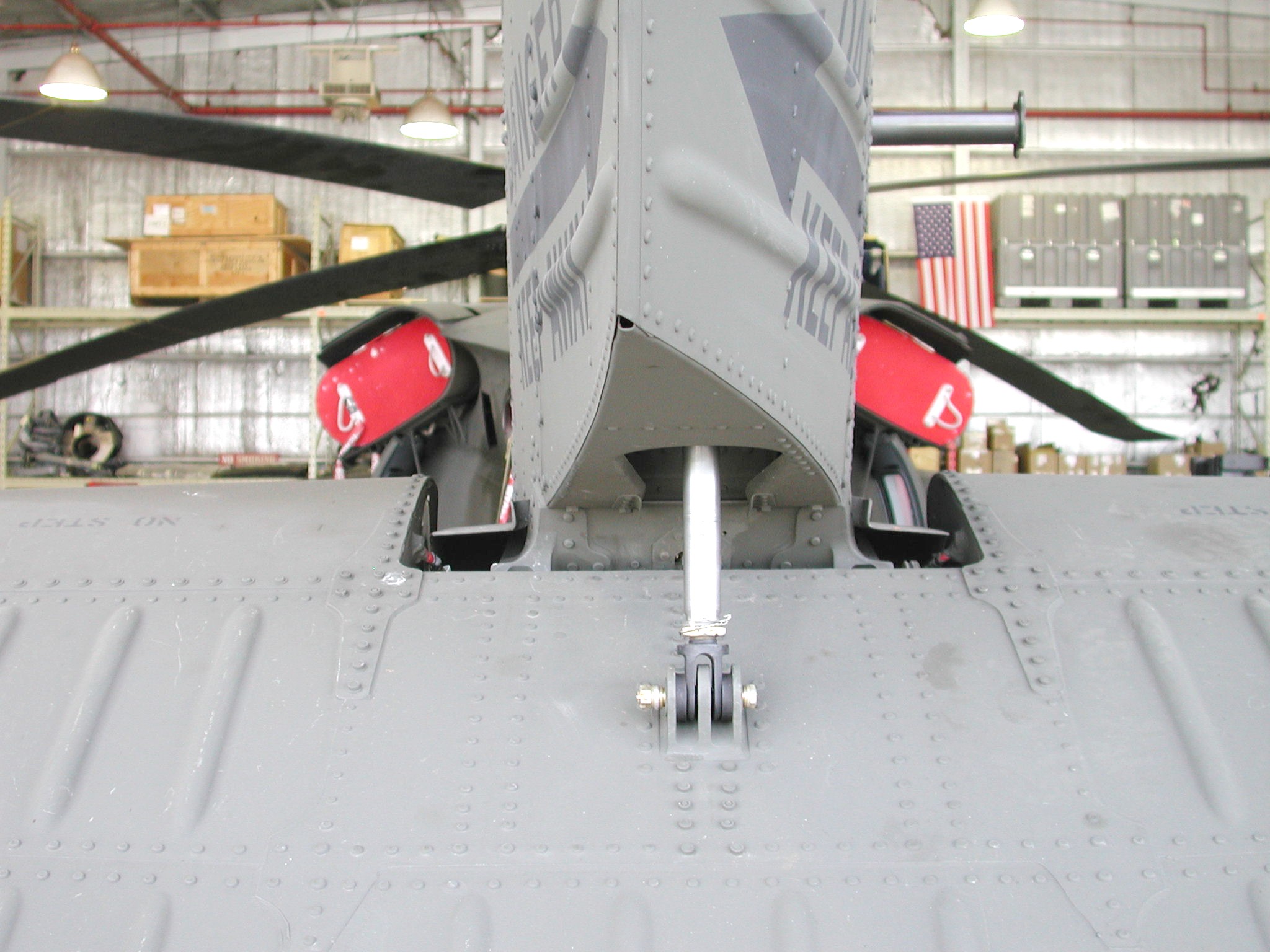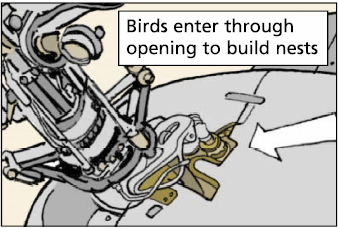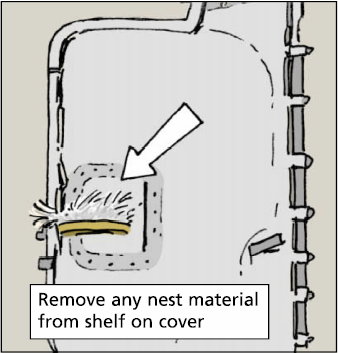Note: This article consolidates several previously published articles on the adverse effects of birds and nests on various aircraft. The links to these articles are listed at the bottom of the page.
Mechanics and crew chiefs,
The old saying, “birds of a feather flock together,” is not just a turn of the phrase, but a reality that’s happening on and inside Black Hawks, Apaches, Chinooks and aircraft hangars.
Any aircraft opening or perch is an opportunity for birds to build nests. They make nests in sheltered places using material such as grass, scraps of safety wire, straw or other material. All of these materials create potential trouble. Nests are foremost a FOD problem. They also hold moisture and that’s a feeding ground for corrosion. Conversely, when grass dries and gets hot, it can create a fire hazard.
Birds pose another problem. Their droppings are corrosive and can eat through paint, wiring and insulation and corrode metal. So if you notice bird droppings splattered on your aircraft, make sure you’re wearing the proper protective equipment such as gloves, goggles and breathing devices to protect yourself while giving your aircraft a thorough cleaning and washing to remove messy bird droppings.
So what do you do to keep those pesky birds at bay for your specific aircraft in your neck of the woods? Read on:
Black Hawk Bird Blocker
While Black Hawks sit on the flight line, birds can squeeze through the opening where the stabilator and the stabilator actuator connect. That opening provides a great spot for birds to build nests.
Darius Johnson, a creative mechanic, came up with a way to prevent birds from ever building nests. He made a bird blocker out of rubber foam, then put the blocker’s thin front end between the stabilator and the fairing to cover the opening. Here are the dimensions to fabricate the bird blocker:
 Image of unit-created and manufactured bird blocker for Black Hawk
Image of unit-created and manufactured bird blocker for Black Hawk
 Place blocker between fairing and stabilator
Place blocker between fairing and stabilator
After you make it, make sure to attach a REMOVE BEFORE FLIGHT streamer to it.
Bird Nests on Apache
On the flight line, birds like to squeeze through openings in the Apache’s tail section. So inspect your aircraft for nest material because grass falling onto a hot gearbox can create a fire.

 Inspect openings in the Apache's tail section for bird nests and remove nest material from the cover
Inspect openings in the Apache's tail section for bird nests and remove nest material from the cover
While inspecting the tail rotor section for bird nests, remove the cover like it says in the TM 1-1520-LONGBOW/APACHE IETM (May 19).
If birds have made your aircraft a home, see your canvas shop about making a cover for the tail rotor section to keep ‘em out.
Bird Nests on Chinook
It’s a common problem for birds to target the Chinook rotor head to build nests.

Use rotor head covers to protect against birds building nests
During your preventive maintenance Daily (PMD), make it a habit to go top-side and eyeball the rotor head for stowaway birds and nests.
The best defense against birds making a home on your Chinook’s rotor head is to keep the rotor head covers on whenever the aircraft sits on the flight line. The cloth cover is NSN 1730-01-455-4997, and the nylon cover is NSN 1730-01-538-5186.
Birds in the Hangar
Here's a handy infographic to share with across your unit:

 Click on image above to open PDF
Click on image above to open PDF